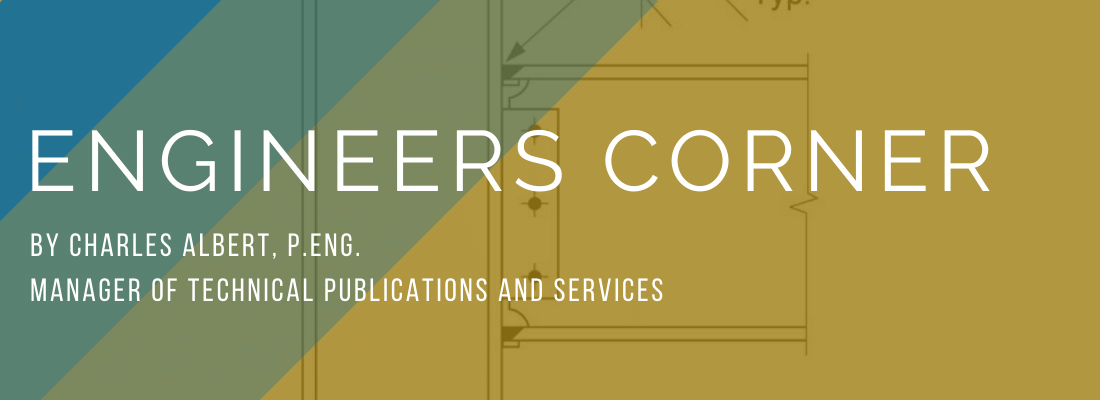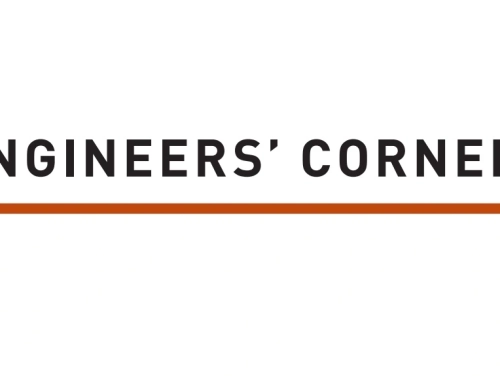
Part 3 in the CISC Handbook of Steel Construction shows various configurations of beam-to-column moment connections designed to resist wind and gravity loads, along with detailed calculations.
As illustrated in the accompanying figure, a typical moment connection has beam flanges welded to an unreinforced column using complete-penetration (CPG) groove welds and a single-sided bolted (or welded) web plate attachment.

Figure 1
Beam-to-Column Moment Connection
A question naturally arises: can such a configuration reach the fully-yielded plastic moment capacity (Mf = φ Mp) of the supported (Class 1 or 2) beam section? The question is relevant because calculations would show that the flange forces due to the applied factored moment, Mf / h, where “h” is the distance between the beam flange centroids, exceed the connection capacity of the flanges alone.
When analyzing the force components in this typical moment connection, it can be assumed that the moment is resisted by the flanges of the wide-flange beam while the web resists the shear force. With the beam flanges welded directly to the column flange using matching CPG welds, the beam flanges are able to reach the strain-hardening portion of the material stress-strain curve and transmit the full plastic moment of the beam section.
This practice has been followed in North America (Carter, 2003) for normal-strength steels and static loading. Notably, in a study of connections proportioned to resist a combination of high shear force and plastic moment of the beam section, Huang et al. (1973) concluded that:
“… flange-welded web-bolted connections may be used under the assumption that full plastic moment of the beam section is developed as well as the full shear strength.”
References:
Carter, C.J. 2003. Steel Design Guide 13 – Stiffening of Wide-Flange Columns at Moment Connections: Wind and Seismic Applications. American Institute of Steel Construction, Chicago, IL.
Huang, J.S., Chen, W.F. and Beedle, L.S. 1973. Behavior and Design of Steel Beam-to-Column Moment Connections. Fritz Engineering Laboratory, Lehigh University, Bethlehem, PA.






